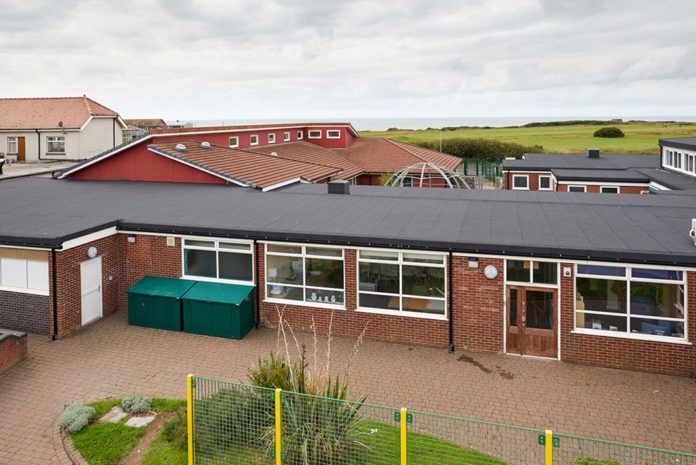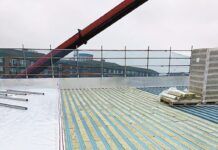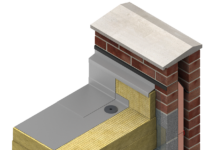Students at George Hastwell School, an academy in Barrow-in-Furness for children with severe or profound learning difficulties, are now sheltered by a roof that is built to a specification from BMI UK & Ireland that is said to be ‘guaranteed to withstand the harsh coastal climate for 20 years’.
Built in the 1960s, the roof was in a very poor state and a cause for concern because it could fail and injure the pupils, who range from two to 19-year-olds. Catering to 66 pupils, the school became an academy in 2015, which qualified it to apply for aid from the Schools Funding Agency. It then commissioned Liverpool-based surveyors Cunliffes, working with BMI, to draw up the school’s Capital Funding Application to the Schools Funding Agency to replace the original roofs.
Cunliffes determined that the roof be stripped according to the BMI specification and that none of the existing system was to be left in situ, even though this process was both difficult and time consuming. This was done to eliminate any risk of the existing system deteriorating beneath the new waterproofing, causing it to fail so that parts of the roof would fall into the building below.
The school is sited on Walney Island, right on the edge of Cumbria and facing into the gales and storms from the Irish Sea, so wind uplift calculations were required to find the best application method. The roof details were sent to the BMI specification team to complete the calculations and determine the correct fixing for the location.
In this case it proved particularly important as the calculations showed that both the membrane and the insulation beneath would be subject to windloads of up to 2.79 kN/m2 (kilonewtons per square metre) at the corners. This meant that the insulation had to be bonded separately using TPI insulation adhesive – a foaming, odourless, VOC-free two-part rapid curing polyurethane adhesive manufactured from bio-renewable materials.
The 1,050m2 project, installed by BMI’s IMA (Intelligent Membrane Association) approved contractor Pendlebury & Sons, consisted of a number of roofs with either concrete or plywood decks. For the non-flammable concrete substrates, BMI Icopal Tecnatorch Sand and Siplast Primer were applied as the vapour control layer. For the plywood decks, the vapour control layer comprised BMI Icopal TorchSafe TA VCL Sanded and SA Primer.
Thermazone Torch On Insulation was then bonded to both vapour control layers with TPI Insulation Adhesive. Total Torch Vapour Dispersion Layer was installed as underlay, followed by Firesmart Thermaweld Capsheet in Charcoal to complete the waterproofing system.
Pendlebury & Sons is said to be very experienced in working with BMI systems, and finds the technical support offered by the company throughout its projects most valuable. “The technical assistance and site inspections are very helpful,” contracts manager Paul Worthington commented. “We get any help we might need with details and the reports and photos provided to the clients after site visits gives them the confidence that everything is being done right and that we’re making progress as scheduled.”
Scheduling the works and co-ordinating with the school was particularly important, says Worthington, because the pupils needs it meant that noise and disruption had to be managed to a minimum. Works on replacing the roofs began in late May 2018 while the school was still in term, with the noisiest work, such as stripping out the existing roofs being done before or after school and the project was successfully completed in the first week of July 2018.
The George Hastwell School in Barrow-in-Furness now has a roof covered by a 20-year BMI guarantee – reportedly ensuring the roof will perform in extreme coastal conditions for decades; and keeping its pupils safe, warm and dry.




